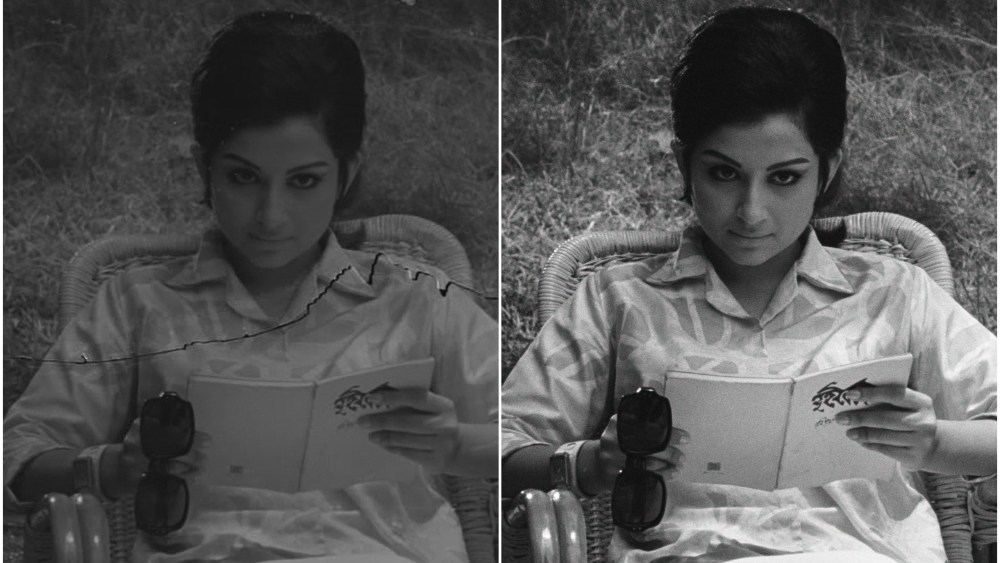Wes Anderson Powers Ray’s ‘Aranyer Din Ratri’ Rescue for Cannes
A six-year restoration journey spearheaded by filmmaker Wes Anderson has culminated in Satyajit Ray‘s 1970 masterpiece “Aranyer Din Ratri” (“Days and Nights in the Forest”) securing a slot at Cannes Classics.
The restoration project began in 2019 when Anderson, through his position on the board of Martin Scorsese’s The Film Foundation, initiated discussions about preserving the film. “The Grand Budapest Hotel” director’s passion for Ray’s work drove the collaborative effort between The Film Foundation’s World Cinema Project, Film Heritage Foundation, Janus Films and The Criterion Collection, with funding provided by the Golden Globe Foundation.
“Anything signed by Satyajit Ray must be cherished and preserved; but the nearly-forgotten ‘Days and Nights in the Forest’ is a special/particular gem,” Anderson said. “Made in 1970. Modern and novelistic. Ray worked in terrain perhaps more familiar to Cassavetes. A clash/negotiation between castes and sexes. Urbans and rurals. Selfish men and their hopes and cruelties and spectacular lack of wisdom. Women who see through them. The great Soumitra Chatterjee: lost but searching. The great Sharmila Tagore: mysterious, cerebral, mesmerizing. From the master, another masterpiece.”
The restoration effort faced extraordinary challenges due to the global pandemic. Shivendra Singh Dungarpur, director of Film Heritage Foundation, undertook a high-risk journey from Mumbai to Kolkata during strict lockdown conditions in 2020 to assess the condition of the original camera and sound negatives preserved by producer Purnima Dutta at her home.
“The restoration of ‘Aranyer Din Ratri’ has been an incredible journey from Kolkata to Cannes that has taken almost six years,” Dungarpur told Variety. “I managed to travel to Kolkata in 2020 in the midst of the pandemic to check the condition of the original camera and sound negatives of the film that were at Purnima Dutta’s home. Once the producers gave their consent, we arranged to ship the elements to L’Immagine Ritrovata in Bologna for scanning and restoration. When I look back I am amazed that I was able to do this given the severe restrictions that were in place at the time.”
The technical restoration process utilized the original camera and sound negatives as primary source elements, with work completed at the specialized facility L’Immagine Ritrovata in Bologna, Italy. Dungarpur worked in close collaboration with the lab throughout the entire process, focusing on preserving the film’s authentic visual characteristics.
Throughout the restoration process, Dungarpur maintained close coordination with the Dutta Family and Ray’s son, Sandip Ray, who actively participated in work-in-progress screenings and final reviews to ensure the restored version maintained fidelity to the original artistic vision. All restoration work was formally approved by both the Dutta Family and Sandip Ray.
“I worked closely on the restoration with Sandip Ray and the lab in Bologna on the whole process beginning from shipping the original negatives to the final restoration and I was struck once again by the mastery of Satyajit Ray as the beauty of the film emerged,” said Dungarpur. “We worked hard on maintaining the grain and blacks to match [DoP] Soumendu Roy’s original work as closely as possible.”
The laboratory’s digital restoration team addressed a comprehensive range of issues present in the original materials, including dust, scratches, stains, image instability, green mold and flickering. The sound restoration presented particular challenges, as the original sound negative exhibited varying degrees of quality across and within reels. Reels 9 through 12 presented the most significant audio challenges, which were successfully minimized through careful intervention. For a limited portion of the audio in Reel 2, a magnetic track preserved by the BFI National Archive was used to replace compromised sections.
A crucial element of the restoration was creating new, accurate English subtitles. For this essential task, the team engaged Indrani Mazumdar, a longtime collaborator of Ray and the only person he entrusted with English subtitles during his lifetime. Mazumdar, who is also renowned for translating many of Ray’s Bengali-language literary works, brought her intimate knowledge of Ray’s intentions to the project.
“‘Aranyer Din Ratri’ is, still today, one of my favorite films and the restoration work that has been done to it is absolutely stunning,” said Sandip Ray. “I worked closely with Shivendra Singh Dungarpur through the whole restoration process and was quite amazed by the meticulous approach that was taken to the restoration. I’m tremendously grateful to Martin Scorsese’s ‘The Film Foundation’, Film Heritage Foundation, and The Criterion Collection for joining hands to make this restoration possible. My heartfelt thanks to Wes Anderson, who I know is a great admirer of my father’s work.”
Producer Purnima Dutta, who preserved the original negatives of the film at her home in Kolkata for decades, added: “I am overwhelmed that ‘Aranyer Din Ratri,’ a masterpiece by Satyajit Ray, has been restored. As the producer of the film, it is a great honor and pleasure for me. I would like to thank The Film Foundation for restoring the film and Shivendra Singh Dungarpur of Film Heritage Foundation for his dedication and the time he spent to supervise and coordinate the restoration to ensure that ‘Aranyer Din Ratri’ is given a second life.”
In parallel with the meticulous restoration work, Janus Films secured licensing rights for the film in the U.S. and U.K. through negotiations with Purnima Dutta. This collaborative effort between The Film Foundation (TFF) and longtime partner Fumiko Takagi of Janus Films/Criterion Collection, who had previously explored licensing the title with Dutta in Kolkata in 2013, ensures the restored film’s availability to audiences in its highest possible quality.
The Bengali-language classic offers a nuanced portrayal of post-colonial urban India through the lens of four young men seeking temporary escape in the forests of Jharkhand. The film features an ensemble cast including Sharmila Tagore, Kaberi Bose, Simi Garewal, Soumitra Chatterjee, Shubhendu Chatterjee, Rabi Ghosh, Samit Bhanja, Pahari Sanyal, and Aparna Sen, among others.
Actor Simi Garewal, who played a memorable role in the film, reflected on the significance of the restoration: “The restoration of ‘Aranyer Din Ratri’ is an extraordinary gift – not just to those of us who were part of the film, but to world cinema. I still remember the silence of the forests, the rhythm of the shoot… Working with Satyajit Ray was like stepping into the mind of a quiet genius – every word, every gesture mattered, and he had this rare ability to make you discover depths in yourself you didn’t know existed. I’m so pleased that this masterpiece has been so lovingly restored by Martin Scorsese’s The Film Foundation, Film Heritage Foundation and the Criterion Collection for future generations to experience.”
Lead actor Sharmila Tagore also shared her memories of the production: “I remember I was shooting for ‘Aradhana’ when Manik Da [Satyajit Ray’s nickname] approached me to shoot for this film for a month at a stretch. It was incredibly hot during the shoot and we could only shoot in the mornings and late afternoons. I have wonderful memories of the time spent with my co-actors and Manik Da’s precision, especially in the way he shot the memory game sequence, was incredible. “Aranyer Din Ratri’ is such a contemporary film that I know it will resonate with new audiences across the world even today.”


